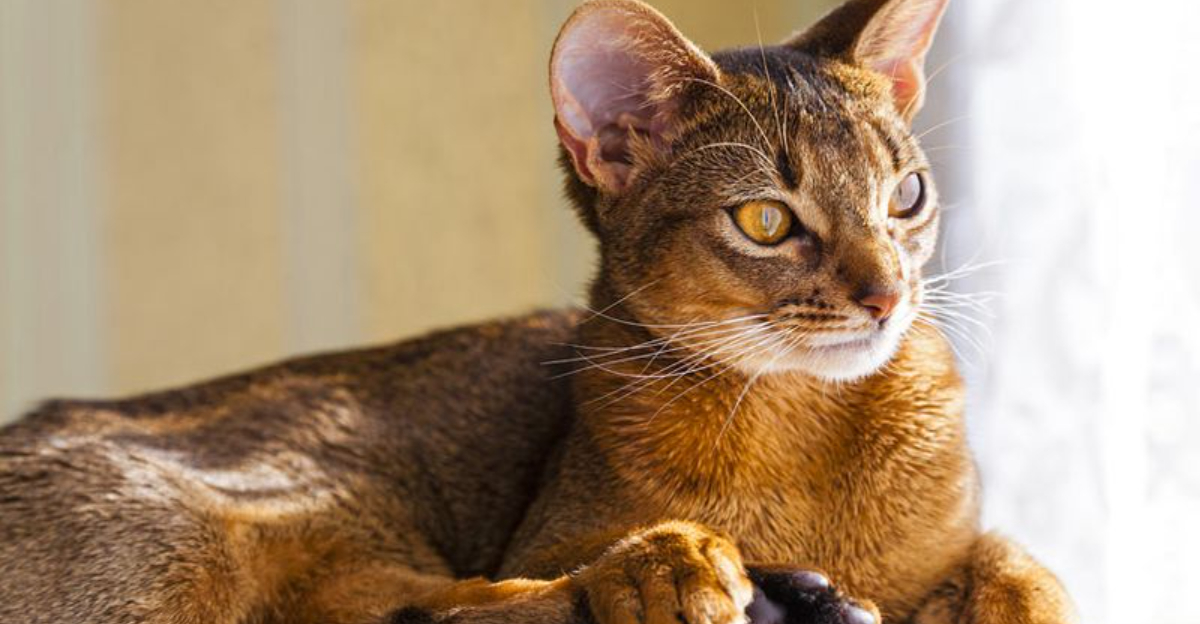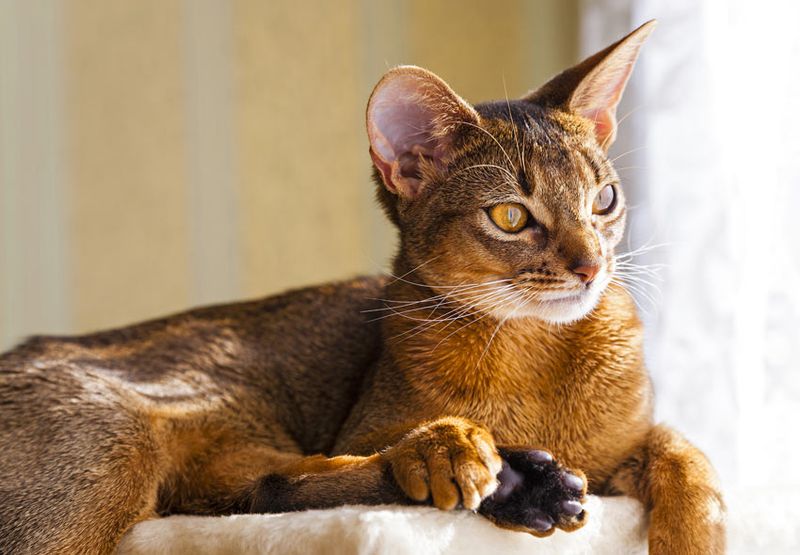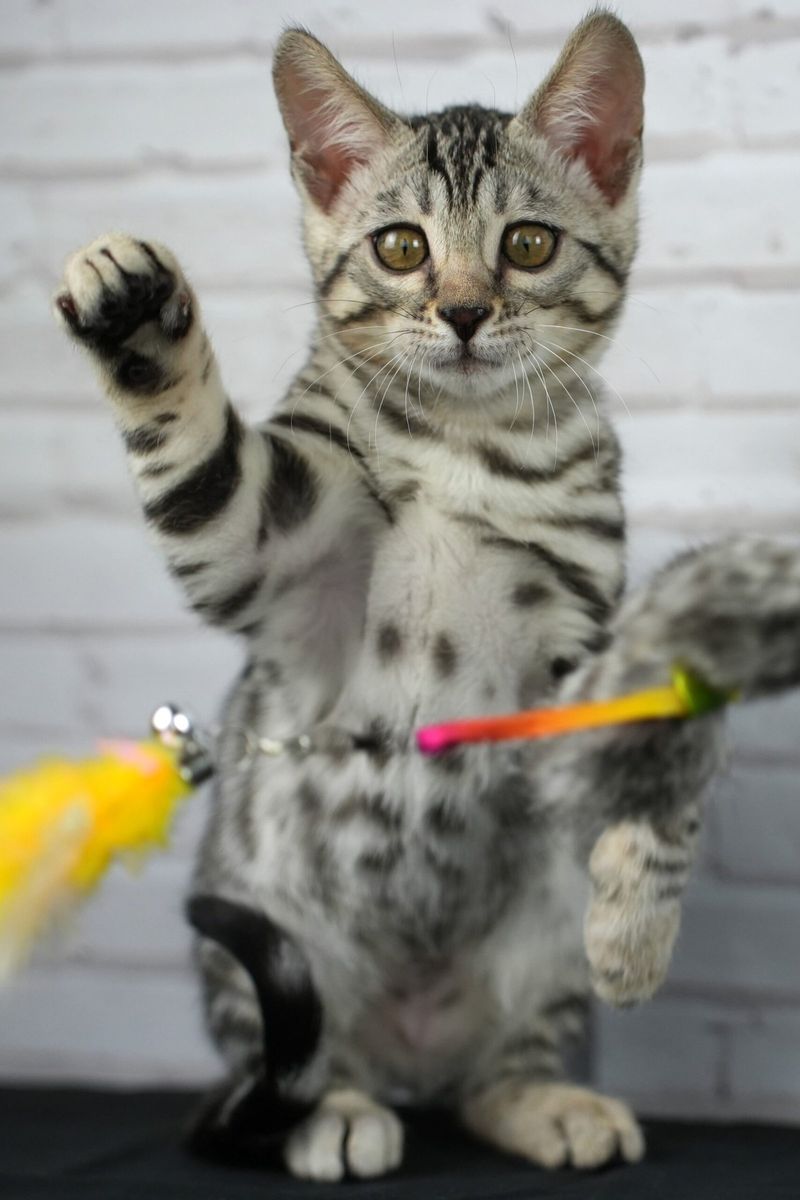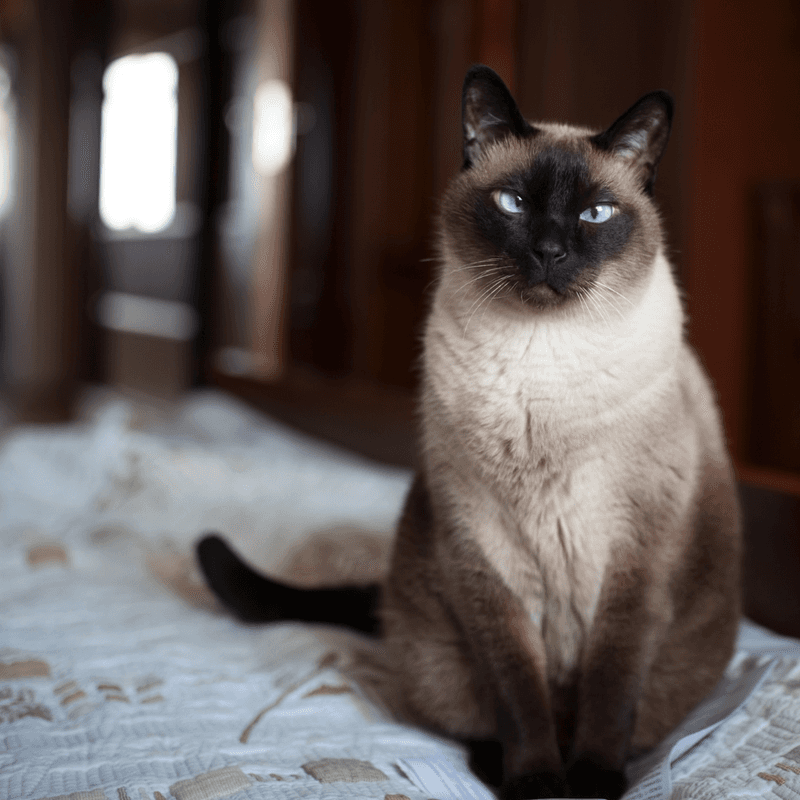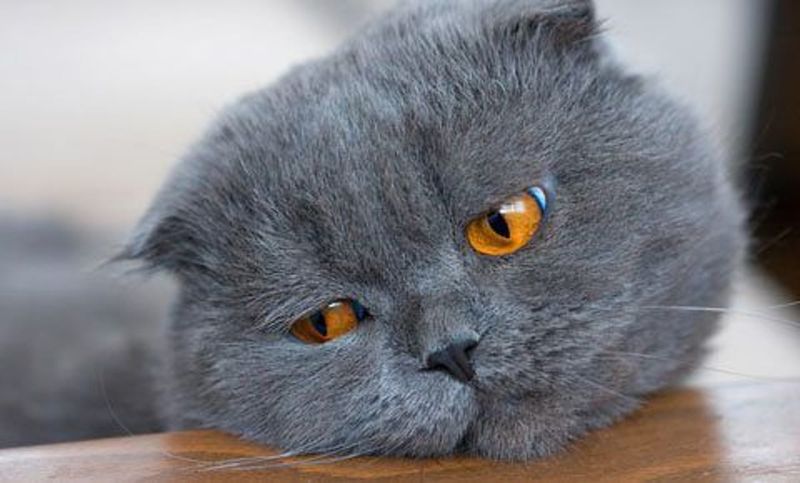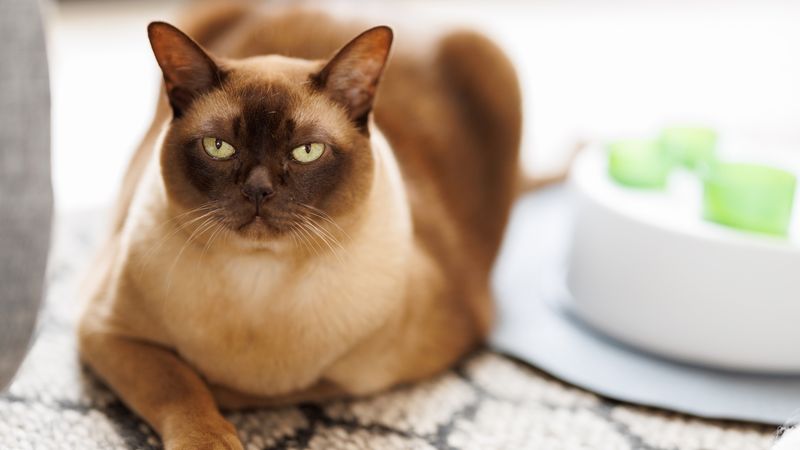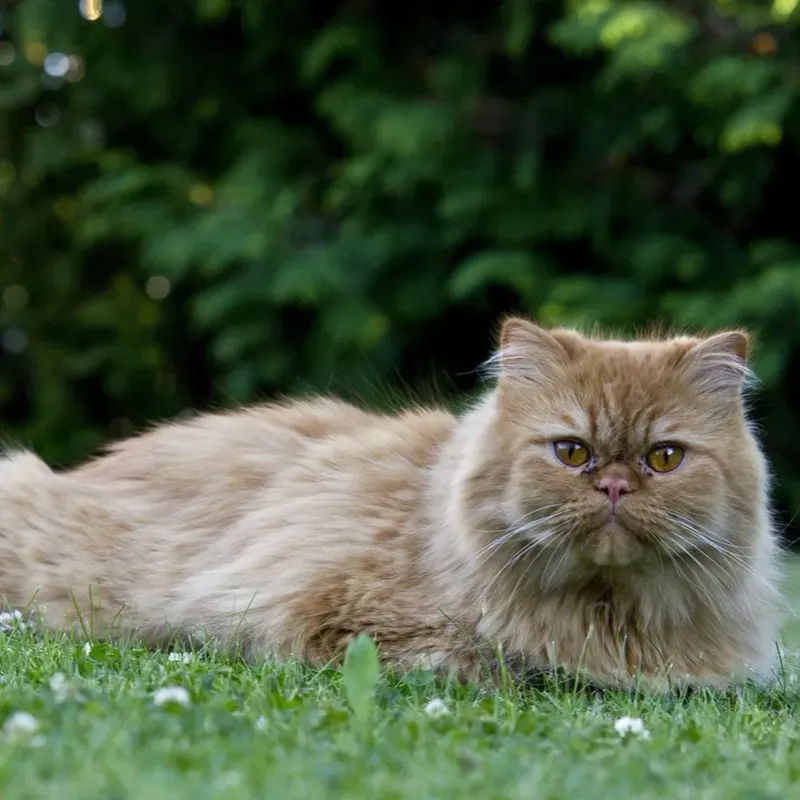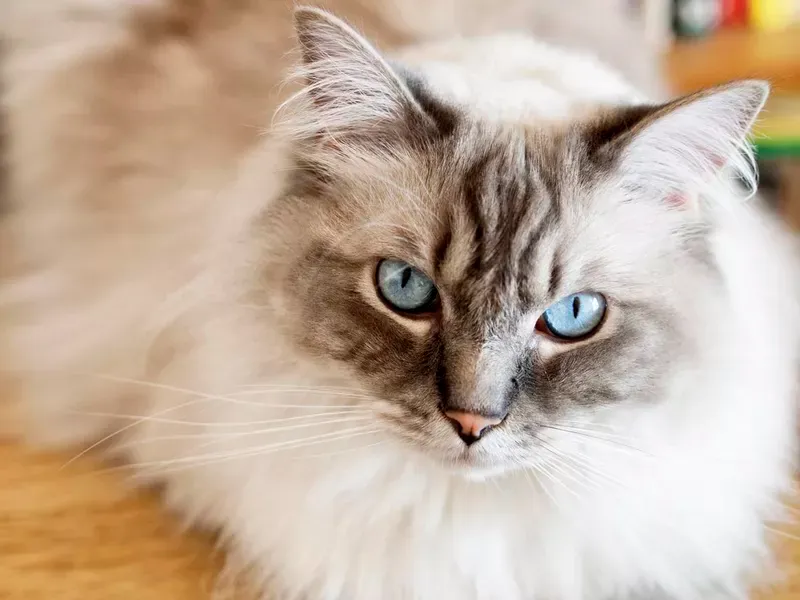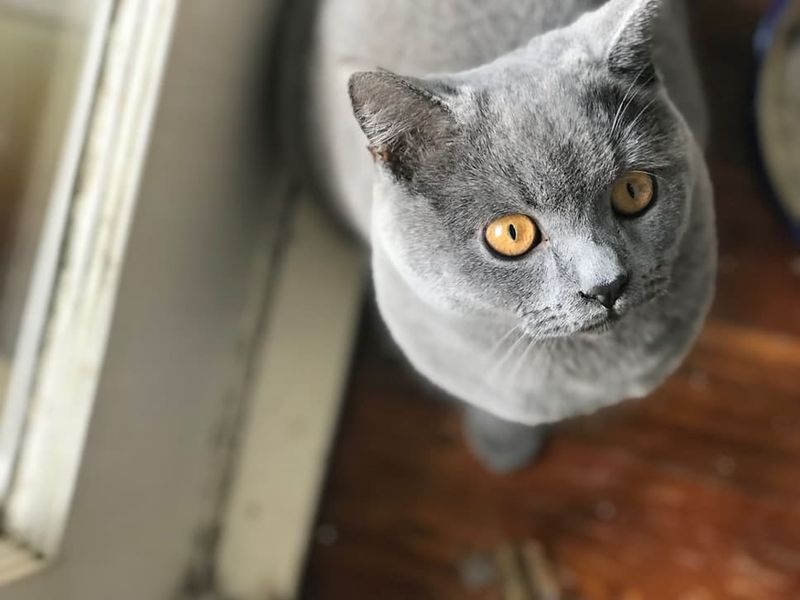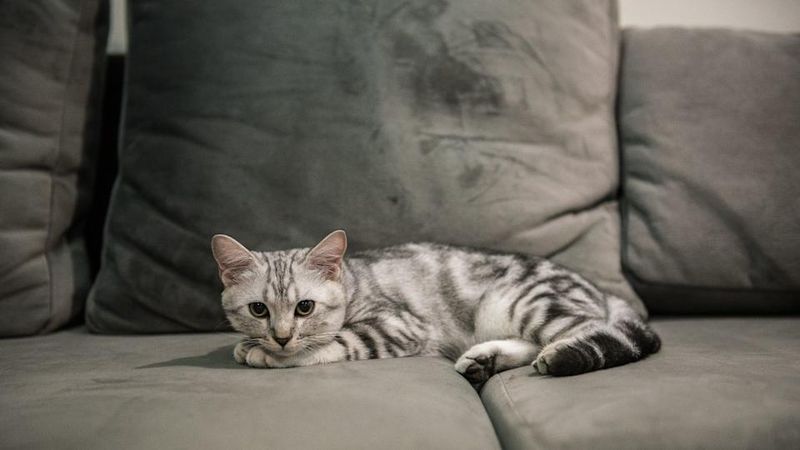📖 Table of Content:
Feline personalities vary widely, shaped by both breed traits and individual quirks. Some are curious thinkers, always on the move and eager to explore their environment. Others prefer a slower pace, finding joy in long naps and soft cushions.
Certain breeds are known for their sharp minds and love of stimulation, often seeking out puzzles or challenges. At the opposite end, some cats thrive on comfort and predictability, content to lounge the day away. Each temperament offers its own charm, depending on the home and lifestyle it joins.
Choosing the right cat means understanding these natural inclinations. Matching energy levels and personality types leads to stronger bonds and happier households. Whether it’s a clever companion or a laid-back friend, the perfect feline fit is out there.
1. Abyssinian
Abyssinians never stop moving. These high-energy cats possess remarkable problem-solving abilities that keep owners constantly amazed. They’ll figure out how to open doors, cabinets, and even complicated food puzzles within minutes.
Social and curious by nature, Abyssinians require daily mental challenges to prevent boredom. Without proper stimulation, these clever cats often create their own entertainment—usually at your expense!
They excel at clicker training and can learn an impressive repertoire of tricks. Many Abyssinian owners report their cats retrieving toys, navigating obstacle courses, and even turning light switches on and off. Their intelligence, combined with playful enthusiast,m makes them perfect companions for interactive households.
2. Bengal
With their leopard-like spots and sharp minds, Bengals bring both beauty and brains to the table. Their energy and curiosity rarely fade with age. A Bengal thrives in a home that offers constant mental stimulation and active play.
Water fascination sets Bengals apart—many happily join their humans in the shower or play in sinks. Their problem-solving abilities are legendary among cat behaviorists. Bengals quickly learn to operate simple mechanisms and remember solutions to challenges months later.
Training these spotted smarties isn’t optional—it’s necessary for their well-being. Without proper mental outlets, they may reprogram your TV remote or reorganize your kitchen cabinets. Their powerful memory and ability to learn by observation makes them exceptional candidates for advanced training techniques.
3. Siamese
Silence isn’t in a Siamese cat’s vocabulary. These vocal charmers have a lot to say—and they expect to be heard. Their smarts go beyond words, showing up in how deeply they connect with the people around them.
Unlike other cats who manipulate through subtle behaviors, Siamese cats directly request attention through persistent vocalizations. They form deep bonds with preferred humans and demonstrate emotional intelligence unusual in the feline world. Many owners report their Siamese understanding complex routines and anticipating regular events.
Puzzle toys, training sessions, and interactive games are essential for these bright cats. Their combination of high intelligence and strong social needs means they thrive with engaged owners who provide both mental challenges and emotional connection. Siamese cats often learn to retrieve small objects and respond to multiple verbal commands.
4. Scottish Fold
Behind those iconic folded ears lies a sharp and curious mind. Scottish Folds may look innocent, but their intelligence reveals itself in subtle, calculated ways. They prefer to watch, learn, and then act with quiet precision.
Folds excel at learning routines and often develop intricate rituals with their humans. They remember where treats are stored and quickly figure out how to access forbidden areas. Their problem-solving approach differs from more energetic breeds—they observe, analyze, then execute perfect solutions.
These thoughtful cats enjoy puzzle feeders and games that reward patience rather than speed. Many Fold owners report their cats learning to open specific doors, recognize words, and even understand time concepts like meal schedules. Their intelligence combines with gentle temperaments to create deeply intuitive companions.
5. Burmese
Burmese cats combine exceptional intelligence with unwavering devotion to their humans. Unlike some smart breeds who pursue independent interests, Burmese use their intelligence primarily to strengthen bonds with their chosen people. They quickly learn which behaviors earn attention and affection.
Their capacity for learning human routines borders on uncanny. Burmese often anticipate their owners’ needs before they’re expressed. They excel at interactive play that involves cooperation rather than solo problem-solving.
Mental stimulation for Burmese should incorporate social elements—games you play together rather than independent puzzles. Their emotional intelligence allows them to read human moods with remarkable accuracy. Many Burmese owners describe their cats as more like dogs in their responsiveness to verbal cues and desire to participate in household activities.
1. Persian
Relaxation comes naturally to Persians, who approach life with quiet grace. Rather than chase puzzles, they find contentment in stillness and gentle observation. Even play and mealtime follow their slow, unhurried rhythm.
Despite their calm demeanor, Persians aren’t unintelligent. They simply allocate their mental energy toward peaceful pursuits. They excel at finding the coziest spots in the house and perfecting the subtle art of soliciting chin scratches without excessive effort.
These dignified cats appreciate gentle routines and predictable environments. While they won’t solve complex puzzles or learn elaborate tricks, they demonstrate remarkable patience. Persian owners cherish their cat’s ability to create calm energy in hectic households. Their undemanding nature makes them ideal companions for those who appreciate quiet companionship over feline theatrics.
2. Ragdoll
Ragdolls earned their name from their remarkable tendency to go limp when picked up. These gentle giants prioritize relaxation over mental gymnastics, preferring cuddles to challenges. Their placid temperament makes them exceptionally easy companions who rarely demand attention.
Unlike their more ambitious feline counterparts, Ragdolls show little interest in solving puzzles or creating mischief. They contentedly observe household activities from comfortable perches, conserving energy for important matters like napping and snuggling.
These affectionate cats form strong bonds with their humans but express devotion through quiet presence rather than demanding behaviors. Ragdolls thrive with gentle handling and predictable routines. Their unambitious nature doesn’t indicate lack of intelligence—they simply choose to apply their mental faculties toward maximizing comfort and minimizing stress, a philosophy many humans might benefit from adopting.
3. British Shorthair
These cats give off serious “too regal to care” energy. British Shorthairs will notice what you’re doing—but don’t expect them to join in. With plush coats and unbothered attitudes, they’re the masters of relaxed observation.
Mental stimulation ranks low on their priority list, well below napping, eating, and receiving occasional affection on their terms. British Shorthairs appreciate predictable routines and comfortable surroundings. They form strong attachments to their homes rather than specific people.
These independent cats excel at entertaining themselves, typically through brief play sessions followed by extended rest periods. Their self-contained nature makes them ideal for busy households. British Shorthair owners appreciate their cat’s undemanding presence and sturdy reliability. They show affection through proximity rather than demands, often choosing to sleep near (but rarely on) their favorite humans.
4. Exotic Shorthair
Exotic Shorthairs combine Persian personality with lower-maintenance coats. These round-faced loafers approach life with delightful lethargy, conserving energy for essential activities like treat consumption and sunbeam napping. Their sweet expressions match their gentle temperaments.
Mental challenges hold little appeal for these contented cats. They prefer predictable environments where minimal effort yields maximum comfort. Exotic Shorthairs develop deep bonds with their humans but express affection through quiet companionship rather than demanding attention.
Their idea of excitement involves watching birds through windows or batting occasionally at dangling toys. Exotic owners appreciate their cat’s undemanding nature and peaceful presence. These cats excel at creating calm environments through their relaxed energy. Their straightforward needs make them excellent companions for first-time cat owners or those seeking drama-free feline relationships.
5. American Shorthair
Practicality defines the American Shorthair. They’re smart enough to open doors or find hidden toys, but often choose not to. Energy is reserved for life’s essentials, like mealtime and naps.
Originally bred as working cats, they retain hunting instincts but channel them into brief play sessions rather than constant activity. American Shorthairs appreciate interactive toys but quickly lose interest once the novelty fades. They excel at creating comfortable routines that require minimal effort.
These middle-of-the-road cats form strong family bonds without demanding constant attention. Their easygoing temperaments make them excellent companions for varied households. American Shorthair owners value their cat’s adaptability and uncomplicated nature. They offer affection without neediness and companionship without drama—qualities that explain their enduring popularity across generations.
